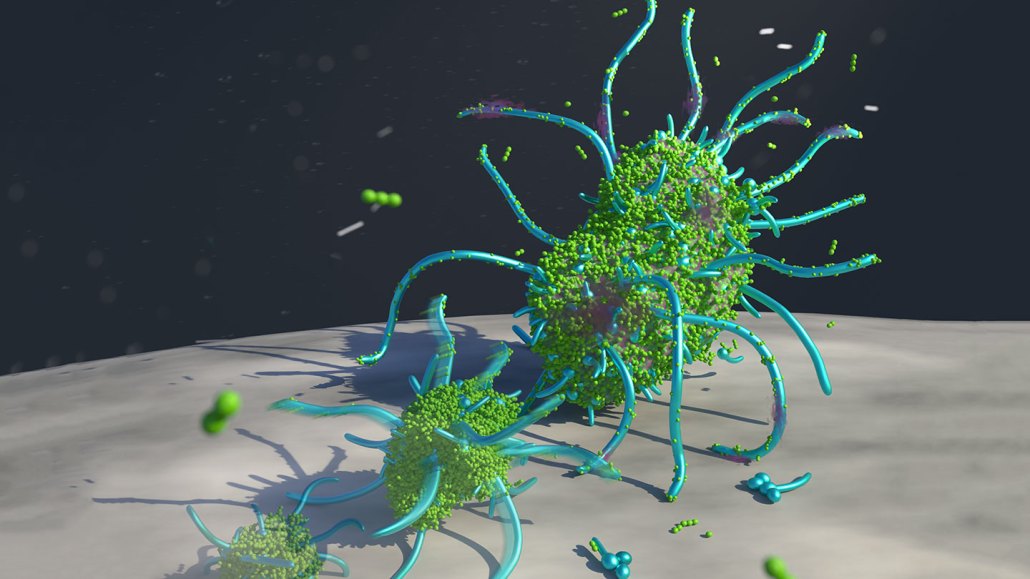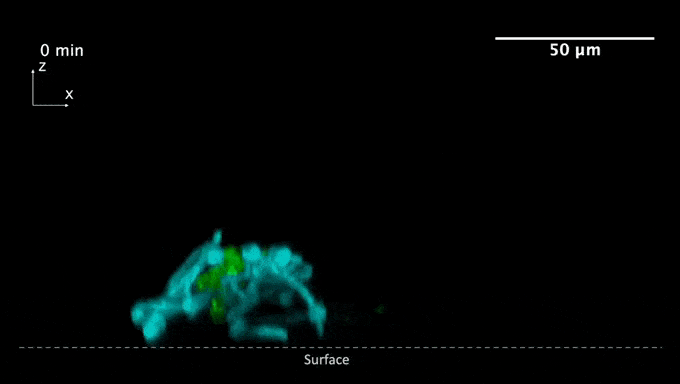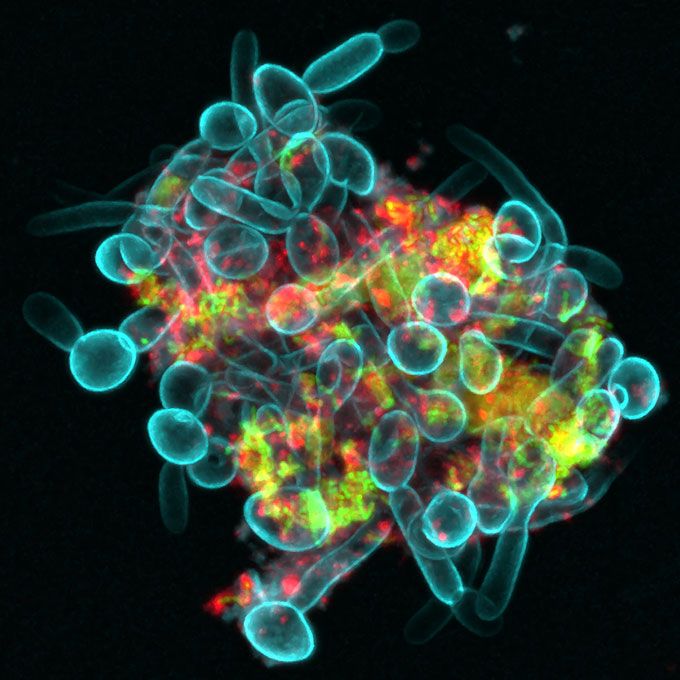Mouth-crawling superbugs cause severe cavities in kids
Bacteria and fungi team up to form superorganisms that creep across teeth

Zhi Ren and Yilan Miao/University of Pennsylvania; adapted by L. Steenblik Hwang
Share this:
- Share via email (Opens in new window) Email
- Click to share on Facebook (Opens in new window) Facebook
- Click to share on X (Opens in new window) X
- Click to share on Pinterest (Opens in new window) Pinterest
- Click to share on Reddit (Opens in new window) Reddit
- Share to Google Classroom (Opens in new window) Google Classroom
- Click to print (Opens in new window) Print
You know eating sweets can lead to cavities, but there’s more to the story. Tooth decay is an infectious disease caused by sugar-loving microbes that live in the mouth. That’s why brushing to remove those microbes is important to keeping teeth healthy. A new study might make you want to brush even more. Researchers have found that those tiny mouth microbes can team up. The resulting superbugs crawl across your teeth to cause widespread damage.
The team reported its findings in Proceedings of the National Academy of Sciences on October 3.
Damage from dental plaques causes cavities. The plaques coat teeth and produce acid. It’s that acid that breaks down a tooth’s hard enamel covering. Plaques are a type of biofilm, explains Hyun (Michel) Koo. He is a dentist and microbiologist at the University of Pennsylvania in Philadelphia. His lab led the study.
Many types of microbes can form biofilms in the mouth, Koo says. But young children with severe tooth decay have a particular type. These are made up of the bacterium Streptococcus mutans (STREP-tow-KOK-us MEW-tans) and the fungus Candida albicans (Kan-DEE-da AL-bi-kuns). The fungus is a type of yeast known to cause infection in the human body.
Researchers knew these biofilms were problematic. But it wasn’t clear why they were worse than other types. Koo and his team set out to understand what makes them so damaging.
Bad-guy superbugs
The researchers collected dental plaque and saliva samples from 44 toddlers. Fourteen children had healthy teeth. Thirty had severe tooth decay. The scientists examined the samples to see what kinds of germs lived in each kid’s mouth. The healthy children had bacteria but no yeast. Children with lots of cavities had both types of microbes.
The team then used cells from the samples to study how the bacteria and yeast interacted. Real-time imaging allowed the team to analyze the germs as they grouped together. Clusters of bacteria glommed on to the yeast. And the yeast grew long hyphae (HI-fee), extending from their centers like legs. The hyphae even worked like legs, stretching out to new places. The hyphae then lifted the clump of bacteria — the “body” of the superorganism — and moved it in the direction the hyphae had grown. At the same time, the bacteria in the clump continued to multiply. This allowed the superbugs to quickly cover the tooth’s surface.

Once in place, the clumps went to work eroding the enamel underneath. With additional testing, the team found that the superbugs were super tough. They were more resistant to antibiotics than either germ alone. What’s more, they were extremely difficult to remove with a hard burst of water.
“Microbes that cause cavities can form these ‘bad-guy superbugs’ able to crawl and spread on teeth,” says Knut Drescher. He’s a biophysicist at the University of Basel in Switzerland. He and his graduate student Hannah Jeckel analyzed the study’s images. “They are stickier, harder to kill and more difficult to remove when united,” he says. That combination “can cause more extensive tooth decay than either alone.”

The team found that sugar fed the superbugs, allowing them to grow faster. “Frequent sugar consumption is one of the most important risk factors for tooth decay in children,” Koo says. So in addition to regular brushing, limiting sweets is key to preventing cavities.
It’s “very interesting how the bacteria and fungi preassemble into organized clusters,” says Jeniel Nett. She is a medical microbiologist at the University of Wisconsin–Madison. She was not part of the study. It’s particularly striking, she notes, that clustering creates new, disease-causing properties.
The research team only studied the superbugs in toddlers. They next plan to look for the same cavity-causing clusters in older kids and adults. They will focus on people “who have weakened immune system due to other medical conditions,” Koo says. “They are often affected by fungal infection as well.”
The team hopes their findings will lead to new treatments for people with severe tooth decay. Such “treatments could target these bad-guy superbugs before they colonize and spread on teeth, preventing formation of cavities,” Drescher says.







